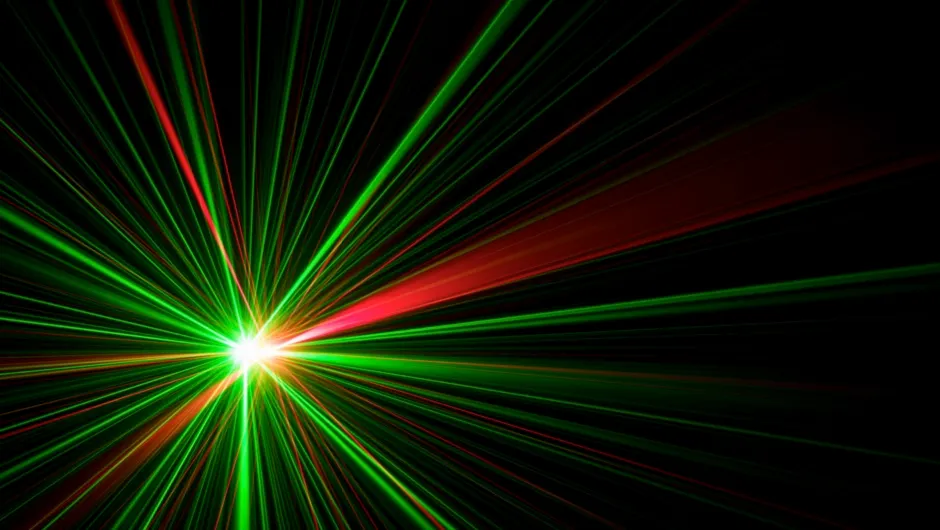From the earliest days of human imagination, speed has carried a sense of wonder and danger. Ancient hunters marveled at the swiftness of gazelles, sailors felt awe at the winds propelling their ships, and warriors admired the horse that could outrun all others. With the dawn of modern technology, trains, cars, and airplanes pushed the boundaries further, igniting humanity’s obsession with breaking speed records. But as powerful as our engines became, a deeper limit emerged from the very fabric of the universe. This was not a technological barrier or a challenge to be overcome, but a fundamental law of nature: nothing can move faster than light.
The statement sounds simple, almost like a decree written into the rules of existence, but it carries profound consequences. To understand why the universe sets this cosmic speed limit, one must journey through centuries of discovery, into the minds of scientists who questioned reality itself, and finally, into the very structure of space and time. The story of light’s supremacy is not just a tale of physics but of human curiosity, imagination, and humility in the face of cosmic truth.
The Mystery of Light in Ancient Thought
Long before physics was formalized, philosophers puzzled over the nature of light. Ancient Greeks such as Empedocles speculated that light traveled with finite speed, shooting out from our eyes to touch the world. Others, like Aristotle, insisted that light moved instantaneously, filling space without delay. For centuries, the debate lingered unresolved, as human senses alone could not detect light’s finite journey. To the naked eye, lightning and the thunder that followed seemed evidence enough that light outran sound, but whether its speed was infinite or simply very large remained unknown.
In the 17th century, as the scientific revolution unfolded, Galileo attempted one of the first experiments to measure light’s speed. He and an assistant each carried a lantern covered by a shutter. Galileo uncovered his lantern, and when his partner saw the flash, he uncovered his own. By timing the delay, Galileo hoped to determine how fast light traveled. Yet the distance was too small, the timing too crude. Light was too swift to be captured in such a simple test. Galileo admitted defeat, concluding only that if light was not instantaneous, it was “extraordinarily rapid.”
The First Proof That Light Is Not Infinite
The answer arrived in the 1670s from an unexpected place: the skies of Jupiter. Danish astronomer Ole Rømer was studying the eclipses of Jupiter’s moon Io. He noticed that the timing of these eclipses shifted depending on Earth’s position in its orbit. When Earth was moving away from Jupiter, the eclipses appeared later than predicted; when moving toward Jupiter, they appeared earlier. Rømer realized that the effect was due to the finite speed of light. Light from Io took longer to reach Earth when the planet was farther away. From this clever observation, he estimated light’s speed as about 220,000 kilometers per second—close to the modern value of 299,792 kilometers per second.
For the first time in history, humanity had proof: light was not instantaneous. It raced through space at a finite, though astonishing, velocity. The cosmic speed limit was beginning to reveal itself.
Maxwell’s Equations and the Wave of Light
Two centuries later, James Clerk Maxwell uncovered the mathematical heart of light. His equations, published in the 1860s, united electricity and magnetism into a single framework—electromagnetism. These equations predicted that disturbances in electric and magnetic fields could travel through space as waves, moving at a speed determined by the properties of the vacuum. When Maxwell calculated this speed, he found it matched the known speed of light. The conclusion was profound: light itself was an electromagnetic wave.
Light was not a mere illumination of the world; it was a ripple in the very fields that permeated space. The speed of light was no longer just a number; it was a fundamental constant emerging from the laws of physics themselves. Yet one mystery remained. Waves, like sound or water waves, usually require a medium to travel through—air, water, or some invisible substance. Scientists imagined an “ether” filling the universe, carrying light waves across the void. But this ether could never be detected. Something deeper was at play.
Einstein’s Revolution: The Birth of Relativity
The true breakthrough came in 1905 with Albert Einstein’s Special Theory of Relativity. Einstein took Maxwell’s equations seriously and asked: what if the speed of light is the same for everyone, no matter how fast they are moving? The idea seemed absurd at first. If you run toward a car, its headlights should appear faster, just as a thrown ball’s speed depends on your own motion. But Einstein declared that light behaved differently. No matter how fast you moved, light would always race past you at exactly 299,792 kilometers per second.
To preserve this principle, Einstein redefined the very structure of reality. Time and space were not absolute but intertwined into a four-dimensional fabric called space-time. If light’s speed was fixed, then time and space themselves had to bend and stretch to accommodate this fact. Moving clocks ticked slower, moving lengths contracted, and simultaneity itself—what counts as “now”—depended on your motion.
The speed of light was no longer just a fast number. It was the universal speed limit woven into the geometry of existence. Nothing could outrun light, not because of some mechanical obstacle, but because doing so would shatter the structure of space and time.
The Energy Barrier
One of Einstein’s most famous equations, E = mc², revealed why surpassing light speed is impossible. Energy and mass are two sides of the same coin. To accelerate an object, you must give it energy. As an object moves faster, its relativistic mass increases—it resists acceleration more and more. At ordinary speeds, this effect is tiny, but as you approach the speed of light, the resistance grows enormous. To push a particle to light speed would require infinite energy. Since infinite energy is unattainable, so is light speed for any object with mass.
Massless particles like photons glide effortlessly at light speed because they are born that way. They cannot rest, cannot move slower, and cannot exceed their own natural pace. The universe has drawn a boundary: massless things travel at light speed, massive things move slower, but nothing can cross from one realm to the other.
The Light Cone and the Limits of Causality
The speed of light is not merely a barrier of motion but also a barrier of causality. In relativity, events in space-time are linked by light cones—diagrams showing the paths light could take. Anything inside your light cone is reachable; signals and influences can travel there. Anything outside is forever unreachable, no matter how much time passes. The light cone defines your cosmic neighborhood, your arena of cause and effect.
If faster-than-light travel were possible, causality itself would break. You could send messages to the past, creating paradoxes where effects precede causes. The universe would unravel into logical contradictions. The cosmic speed limit preserves order in the flow of time, ensuring that cause and effect remain consistent.
Experiments with the Speed of Light
Modern science has tested Einstein’s principle with extraordinary precision. Particle accelerators hurl protons and electrons to speeds just below light, but never beyond. Despite immense energies, the particles merely gain more mass-like resistance, creeping closer to light speed without ever crossing the line. Cosmic rays, born in distant galaxies, slam into Earth’s atmosphere with unimaginable energy, yet even they fail to surpass light.
Physicists have also probed whether light’s speed is truly constant in all directions and conditions. Experiments such as the Michelson-Morley test, and countless successors, confirmed again and again: no preferred frame of motion exists. Light’s speed is unwavering, a universal constant.
The Temptation of Tachyons
The idea of particles moving faster than light—hypothetical “tachyons”—has long tempted physicists and writers alike. Tachyons would possess imaginary mass, forever beyond the light barrier, always faster than light but never able to slow down. Yet their existence would destabilize physics, allowing violations of causality. Despite decades of speculation, no evidence for tachyons has ever appeared. They remain shadows in the equations, a ghostly reminder of the boundaries Einstein set.
Light and the Expansion of the Universe
The cosmic speed limit also defines how we see the universe itself. When we look at distant galaxies, we see them not as they are today but as they were billions of years ago, because light takes time to travel. The farthest galaxies visible to us lie at the edge of the observable universe, about 46 billion light-years away. We cannot see beyond this cosmic horizon, not because the galaxies do not exist, but because their light has not yet reached us.
Even the universe’s expansion obeys the light limit in subtle ways. Galaxies can appear to recede from us faster than light, not because they themselves are moving so quickly, but because space-time itself is stretching. In this way, the cosmic speed limit does not constrain the growth of the universe, but it does constrain the transfer of information and matter within it.
Quantum Strangeness and the Illusion of Speed
Quantum mechanics adds layers of mystery. Entangled particles appear to influence each other instantly across great distances, as if information traveled faster than light. Yet no usable signal can be transmitted this way. The correlations emerge when measurements are compared, but they do not violate relativity’s ban on faster-than-light communication. Light’s supremacy endures even in the quantum realm, though in a form that stretches our intuition.
Dreams of Breaking the Limit
Science fiction often imagines warp drives, wormholes, and hyperspace as loopholes in the cosmic speed law. While such ideas make compelling stories, they also inspire genuine scientific speculation. Wormholes—tunnels connecting distant regions of space-time—could, in principle, allow travel faster than light would otherwise permit. Warp drives, bending space-time itself, could sidestep the speed barrier without actually moving through space faster than light. Yet these concepts require exotic matter and energies beyond anything we know how to create. For now, they remain dreams, reminders of human longing to defy the cosmos.
Why the Limit Matters
The cosmic speed limit is not a frustration but a gift. It binds the universe together, ensuring consistency and order. It prevents chaos in the chain of cause and effect, preserves the fabric of time, and provides a stable framework for life to exist. Without it, paradoxes would abound, and the universe might be incomprehensible.
Moreover, the light speed limit humbles us. It reminds us that no matter how advanced our machines, some boundaries cannot be crossed. The universe is not a playground without rules; it is a structured, lawful realm. Yet within those rules lies wonder, beauty, and infinite discovery.
Light as a Messenger of the Cosmos
The speed of light also serves as humanity’s bridge to the stars. Every telescope, from Galileo’s simple lens to the James Webb Space Telescope, relies on light to tell the story of the universe. We measure distances in light-years, charting cosmic history by the time it takes light to travel. The very evidence of the Big Bang, the cosmic microwave background, is light that has journeyed across nearly 14 billion years to reach us.
Light does more than illuminate the world around us; it illuminates our past, carrying the record of creation itself. That it has a finite speed is not a barrier but a blessing, allowing us to look backward in time, to witness the history of stars and galaxies unfolding before our eyes.
The Eternal Race
Nothing beats light. Not because light is merely faster, but because light defines what “fast” means. It is the ultimate yardstick, the boundary beyond which existence itself falters. To challenge it is to challenge the nature of space, time, and causality. And yet, in that limit lies inspiration. Humanity has always been drawn to the unreachable horizon, not only to conquer it but to understand it.
Einstein once remarked that the most incomprehensible thing about the universe is that it is comprehensible. The cosmic speed limit is part of that comprehensibility: a rule that both confines and liberates, forcing us to think deeper, to imagine more boldly, to respect the elegance of the cosmos.
In the end, the cosmic speed limit is not an obstacle to human dreams but a compass guiding them. Light, swift and untouchable, races ahead, and we follow—not to surpass it, but to learn from its path. In the glow of its beams, we discover who we are, where we came from, and how vast, mysterious, and beautiful the universe truly is.






